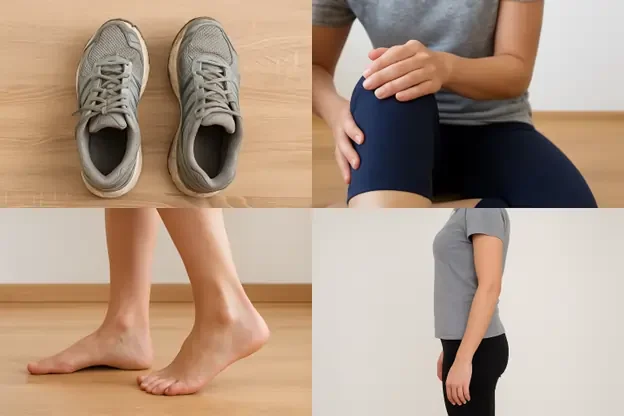5 Signs Your Feet Are Biomechanically Off Balance
Your feet are the base of your body’s movement. Every step you take affects your ankles, knees, hips, and spine. When your feet are not biomechanically balanced, the effects often ripple through the rest of your body, causing discomfort and even long-term issues. The good news? Your body gives you warning signs. Recognising them early can help you prevent ongoing pain and restore healthy movement.
1. Uneven Wear on Your Shoes
Look at the soles of your shoes. Do they wear out more on one side than the other? Uneven wear is often an indicator that your feet roll inward (overpronation) or outward (supination) when you walk. Over time, this imbalance can put unnecessary strain on your ankles, knees, and hips.
2. Aches and Pains Beyond Your Feet
Foot imbalance doesn’t always hurt your feet directly. It may first show up in your knees, hips, or lower back. If you experience joint discomfort after walking, running, or even standing for long periods, your feet could be the hidden cause.
3. Tired or Heavy Legs After Activity
Feeling unusually fatigued after a short walk or standing for a while may suggest your feet are not supporting your body effectively. When your arches collapse or your alignment is off, your muscles work harder than they should, leading to tiredness and discomfort.
4. Frequent Ankle Instability or Twists
Rolling your ankle repeatedly or feeling unstable when walking on uneven ground can point to poor foot biomechanics. Weakness in supporting muscles and misaligned foot posture increase your risk of sprains and ongoing ankle issues.
5. Postural Changes You Can See
Sometimes the signs are visible in your overall posture. A tilted pelvis, one shoulder sitting lower than the other, or uneven leg length may all stem from misaligned feet. Because the body compensates to keep you moving, what begins in the feet often shows up in the way you stand and walk.
What You Can Do
Check your shoes regularly for uneven wear.
Strengthen your feet with simple exercises like calf raises and arch strengthening.
Stretch your calves and arches to keep them flexible.
Choose supportive footwear designed for your activity level.
Work on your balance through single-leg exercises or stability training.
If pain persists for more than a couple of weeks, or if it interferes with your daily routine, it’s best to get a professional assessment.
Why Early Action Matters
Ignoring biomechanical imbalance can lead to more than foot pain. Over time, it may contribute to long-term issues in the knees, hips, and back. By paying attention to early signs, you can prevent small problems from becoming major setbacks.
At Podhills Podiatry, we specialise in biomechanical assessments, custom orthotics, and personalised treatment plans to restore natural movement and reduce pain. Taking care of your feet is one of the smartest steps you can take for your overall health and wellbeing.

